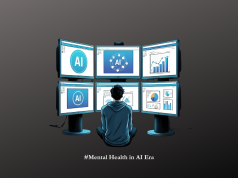In today’s fast-paced work environments, ‘burnout’ has become a buzzword that resonates with many across various industries. This is particularly true among the demographics of The Work Times readership, who, much like The New York Times audience, are often engaged in high-pressure careers that demand long hours and intense mental exertion.
Burnout is more than just an ‘off day;’ it’s a clinical syndrome recognized by the World Health Organization, characterized by feelings of energy depletion or exhaustion, increased mental distance from one’s job, and reduced professional efficacy.
The Causes and Symptoms:
Workplace burnout stems from a variety of factors. Consistently high workloads, tight deadlines, and the pressure to perform can lead to chronic stress. In a bid to keep up, employees may sacrifice personal time, leading to an imbalanced work-life equation. Symptoms manifest as chronic fatigue, irritability, cynicism towards one’s job, and in some cases, physical symptoms such as headaches and gastrointestinal disturbances.
Impact on Employees and Organizations:
For the individual, burnout can result in long-term health issues including depression, anxiety, and cardiovascular problems. For organizations, the consequences are equally dire: reduced productivity, high employee turnover, and the potential tarnishing of company reputation due to decreased quality of work or customer service.
The Role of Employers:
Employers, recognizing the need for a healthy workforce, bear a significant responsibility in mitigating burnout. It begins with acknowledging the problem can no longer be considered a necessary evil of high-achieving environments.
Innovative Policies and Approaches:
Some companies have taken lead by setting boundaries on work hours, encouraging employees to fully disconnect after work hours and on days off. Others have introduced flexible working arrangements, recognizing that a one-size-fits-all schedule may not suit every employee’s personal commitments or productivity patterns.
Many organizations are now offering wellness programs, which range from in-office yoga sessions to subsidizing gym memberships, or providing access to mental health resources, like counseling services or mindfulness apps.
Creating a Sustainable Work Culture:
Keys to a sustainable, supportive work culture include clear and open communication, fair distribution of workload, recognition of achievements, and regular check-ins on employee well-being.
Insights from Experts:
Human resources professionals and mental health experts alike stress the importance of proactively creating an organizational culture that values employee well-being. This includes training managers to spot the signs of burnout and developing a robust support system that employees can turn to when they are struggling.
The Work Times understands that to build a resilient, productive, and loyal workforce, combatting workplace burnout isn’t just an option—it’s a necessity. With insights and strategies for fostering a healthier workplace, we hope to inspire our readers to advocate for and implement changes that prioritize well-being at work, in turn creating a ripple effect across industries.
In conclusion, the modern workforce is crying out for a more balanced, supportive work environment. By investigating and sharing insights on this platform, The Work Times aims to spark conversations and action that lead to healthier work-life experiences for all.




























